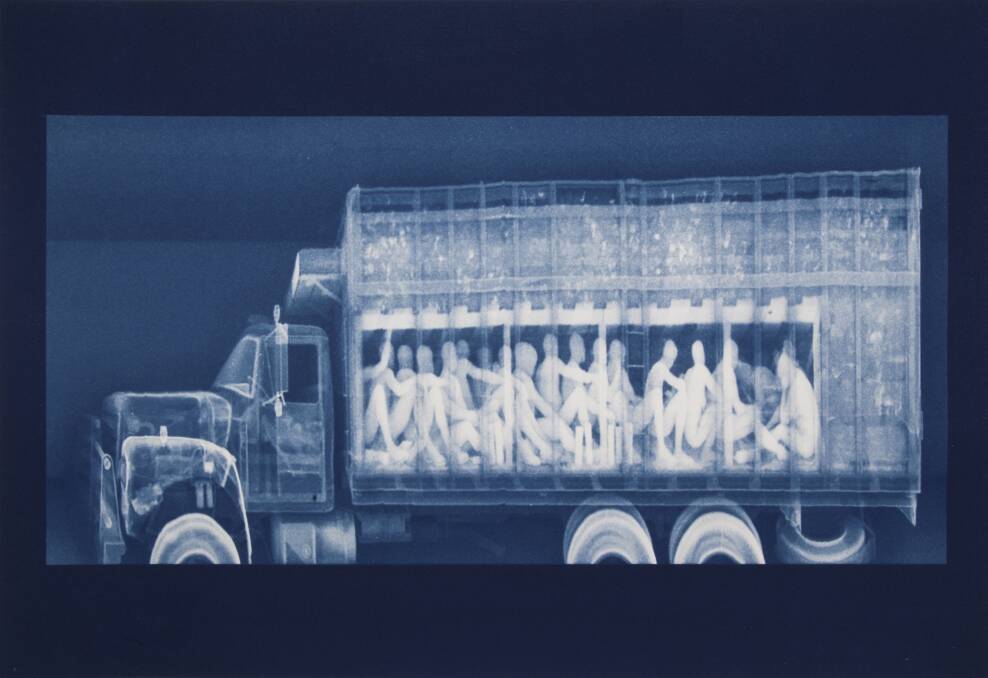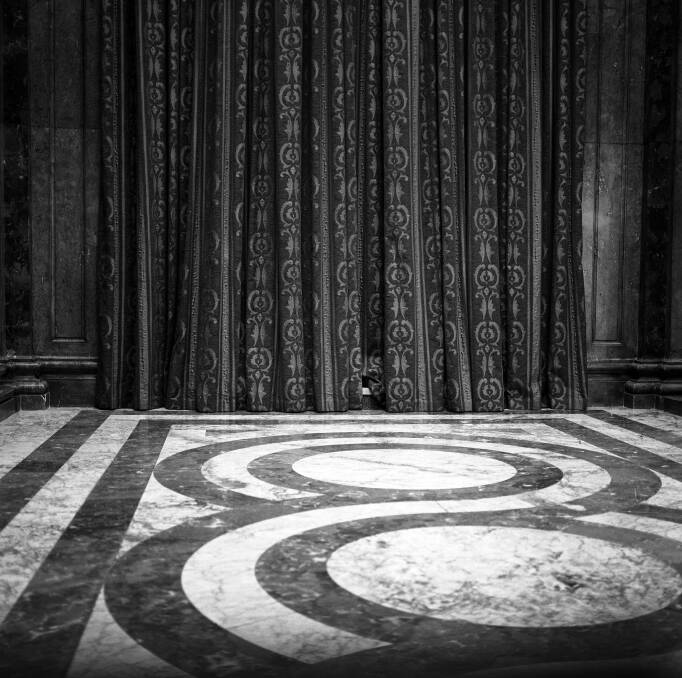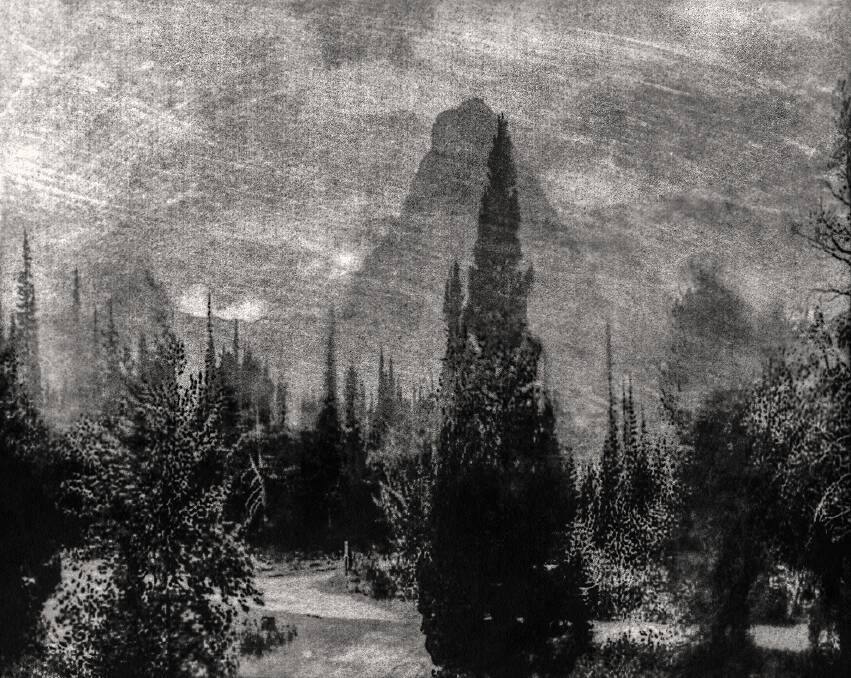
Various artists: Now You See Me: Visualising the Surveillance State. Curated by Ashley Lumb and assistant durator Kate Matthews. Huw Davies Gallery, Photo Access, Manuka Arts Centre. Until December 14.
Subscribe now for unlimited access.
$0/
(min cost $0)
or signup to continue reading
This exhibition presents the work of eight international artists, including three Australians. Exhibition curator Ashley Lumb writes that these artists "expose the usually obscured mechanisms of state control through a mixture of photographic, textual, sculptural and filmic approaches". It is a most timely show, as increasing numbers of people are asking concerned questions about surveillance issues here in Australia and across the world.
We are fond of criticising other countries for engaging in pervasive surveillance of large numbers of their citizens and visitors. I was a tourist in China earlier this year just before the anniversary of "the incident" in Tiananmen Square. Our guide requested that we not ask her any questions about it whilst in the Square, presumably because some of China's millions of surveillance systems are installed there.
Here in Australia law enforcement authorities can access a variety of "non-content" data from internet companies with authorisation by senior police officers or government officials rather than judicial warrant. Right now, there is significant public debate about the Home Affairs Minister's plans for surveillance in our own country. Very recently we had a reminder of the issue around leaking of secret information when a protestor managed to display a banner on the roof of Parliament House about Julian Assange.
All the way through this exhibition the viewer is challenged to think about surveillance issues. Each artist adds to the questions confronting us as we examine each of their contributions.

Australian artist Jane E Brown and British photographer/writer/curator/educator Lewis Bush each investigate the history of public surveillance. Brown refers to surveillance as a means of social control in her excellent silver gelatin prints speaking to the invention and use of CCTV. The very first such system was used to observe the launch of V-2 rockets from Germany starting in 1942. That tells me that CCTV has been around for all of my lifetime and, probably, for most of yours too. Large numbers of V-2's targeted King's Lynn in Norfolk in 1944. Forty-three years later, King's Lynn was the first town in the UK to instal CCTV cameras for public surveillance.
Brown's work challenges us to consider the way we use our social media today. Are we undertaking mutual surveillance? Are we self-censoring and creating "groupthink"? Bush's large inkjet prints investigate mysterious shortwave radio broadcasts and explore a topic where misinformation collides with facts.
American artist Marcus DeSieno invites us to think about why cameras are installed in places far removed from human presence. His strong large prints of stills from surveillance cameras in such places tell us we are never truly alone.
Another Australian, Aaron Claringbold, contributes a most interesting transparent artist book displayed on a custom-made lightbox. Informed by surveillance as we understand it today, a grid of images overlaying and bleeding into each other explores elements of public protest.
American Taryn Simon displays selected images from a book, an inventory of illegal and prohibited contraband entering the USA from abroad. Canadian artist David Spriggs' video also relates to issues of border control and illegal substances. I was reminded of various customs and immigration entry points that I have negotiated and, in particular, of the unnecessarily aggressive questioning by a US border officer experienced by my wife at Tijuana.

American Noelle Mason's exquisite cyanotypes of appropriated border control X-Ray photos are disturbing. Her appropriated video compilation is mesmerising, particularly in the footage of coyotes being hunted. And Australian Eliza Hutchinson eloquently speaks to us of seduction and duplicity in the media.
This is an exhibition well worth viewing, taking time to study the works and think about the surveillance questions they pose.

